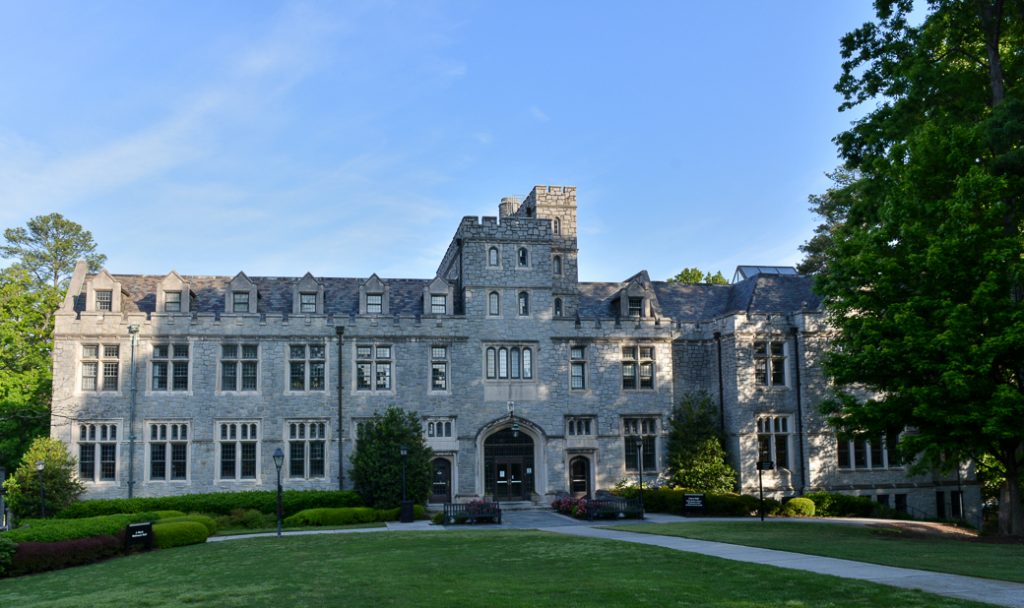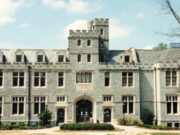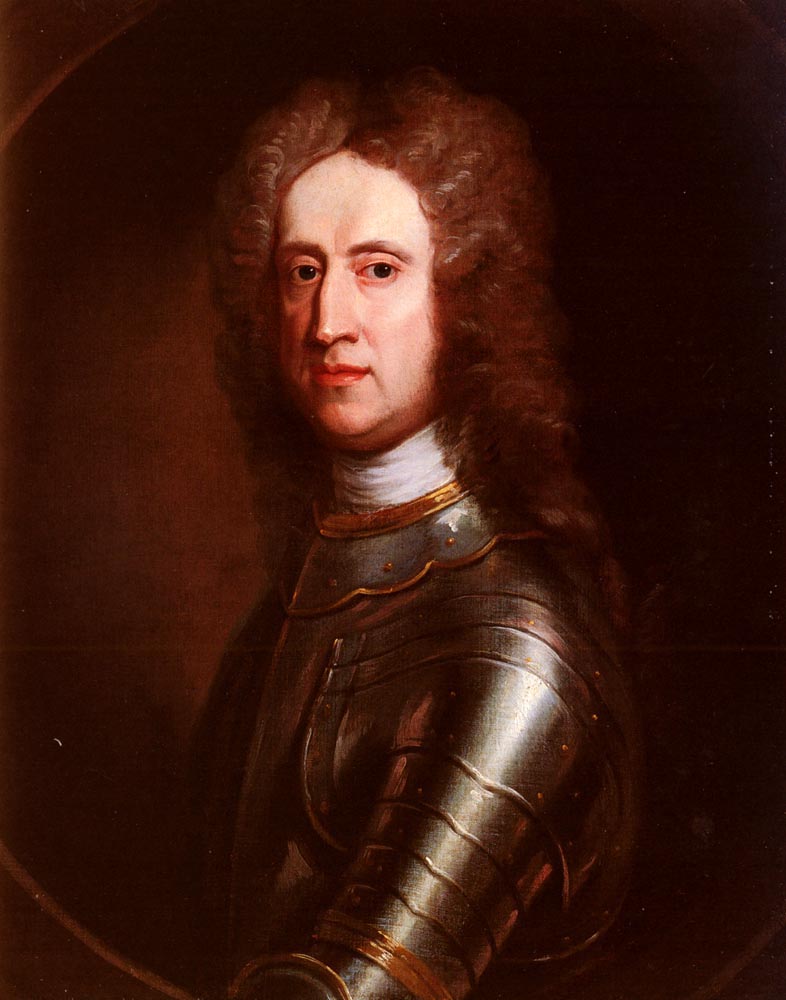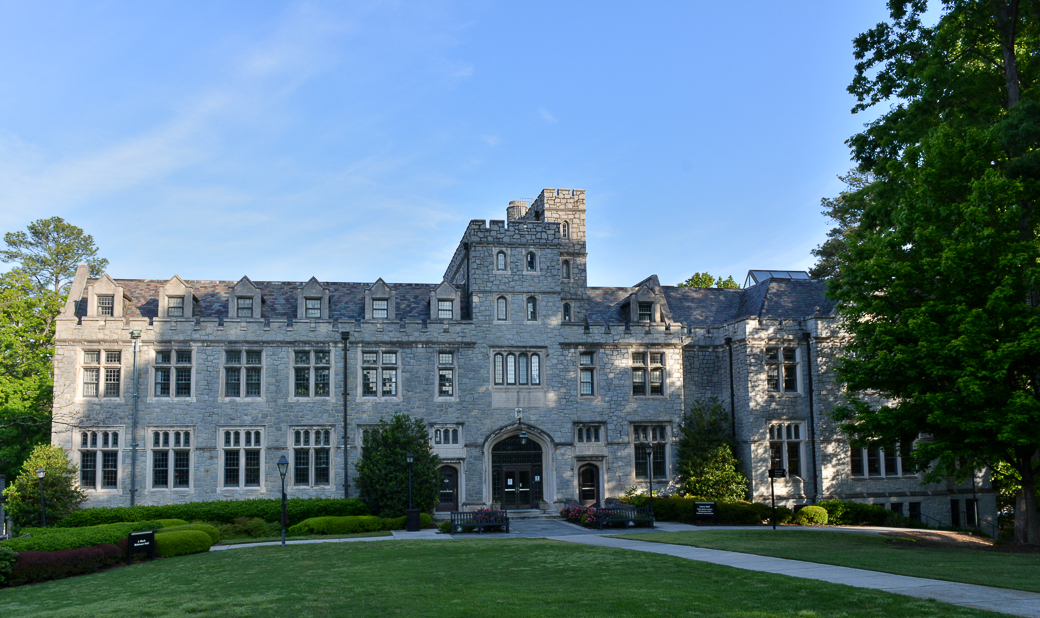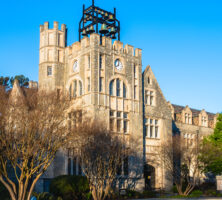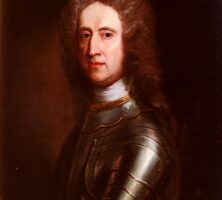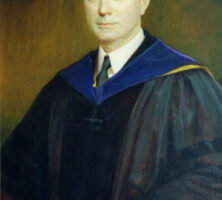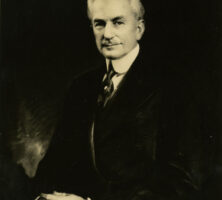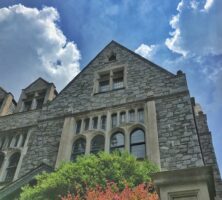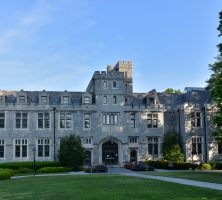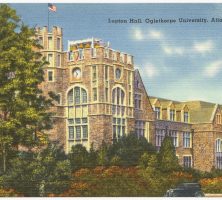Oglethorpe University, known for its Gothic revival architecture and its landmark location on Peachtree Road in north Atlanta, is on the National Register of Historic Places. The school is the only Georgia coeducational institution classified by the Carnegie Foundation for the Advancement of Teaching among Baccalaureate (liberal arts) Colleges I, a category that includes selective institutions that award more than half of their degrees in the arts and sciences.
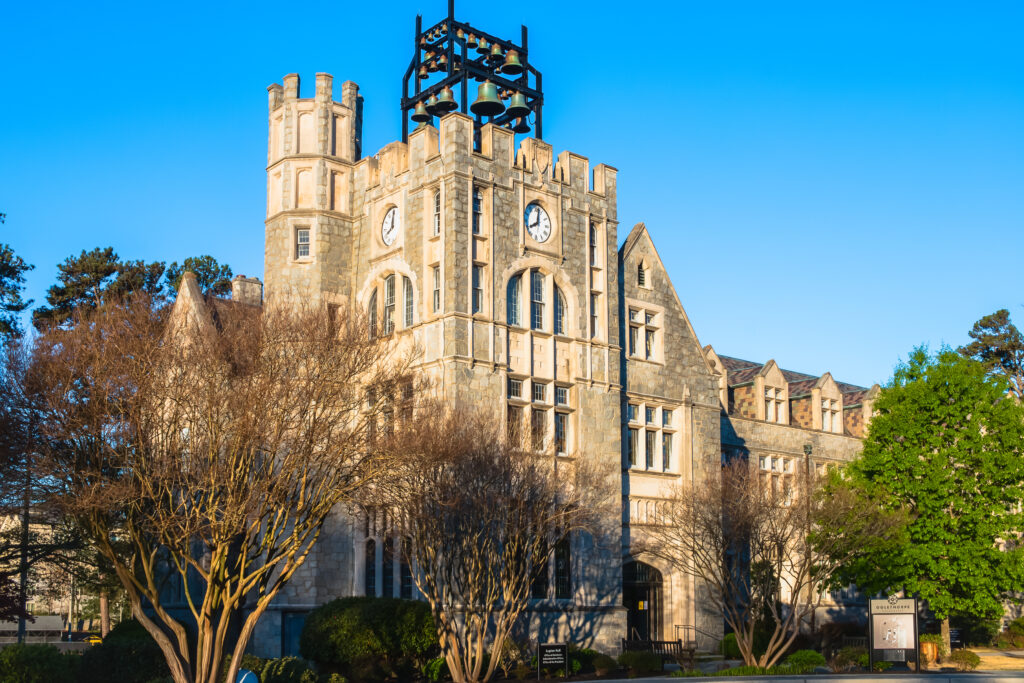
Old Oglethorpe University
In 1835 the state of Georgia chartered Oglethorpe University as a Presbyterian institution named after James Edward Oglethorpe, the founder of the colony. Before that, Georgia Presbyterian families sent their sons to the College of New Jersey (later Princeton University). Oglethorpe University was one of the earliest denominational institutions in the region. The antebellum college began with four faculty members and about twenty-five students, and was originally located on a hill at Midway, a small community in Baldwin County near Milledgeville, then the capital of Georgia.
The original Oglethorpe curriculum consisted of courses in Greek, Latin, mathematics, theology, and the natural sciences. Notable faculty members included the college’s longtime president, Samuel Kennedy Talmage, an eminent minister; Nathaniel M. Crawford, professor of mathematics and son of Georgia statesman William Harris Crawford; Joseph LeConte, destined to earn distinction in geology and optics; and James Woodrow, an uncle of Woodrow Wilson and the first professor in Georgia to hold the Ph.D. degree. Oglethorpe’s most distinguished alumnus from the antebellum era was the poet, critic, and musician Sidney Lanier, who graduated in 1860. The following year he, with other Oglethorpe cadets, marched off to war.
Oglethorpe University ceased to exist during the Civil War (1861-65). Nearly all of its students fought for the South, the endowment was lost in Confederate bonds, and the buildings were used for barracks and hospitals. The school closed in 1862, and in 1870 it was briefly relocated to the Neal House in Atlanta, at the present site of Atlanta’s city hall. Oglethorpe at this time produced several educational innovations, expanding its curriculum to business courses and offering the first evening college classes in Georgia. The dislocations of the Reconstruction era proved insurmountable, however, and in 1872 Oglethorpe closed its doors for a second time.
Oglethorpe Refounded
In 1912 a Presbyterian minister named Thornwell Jacobs began campaigns in Atlanta and the South to refound Oglethorpe University. His grandfather, Ferdinand Jacobs, had served on the faculty of old Oglethorpe. In 1913 the institution was incorporated by the state of Georgia. Linking the old with the new, members of the classes of 1860 and 1861 witnessed the laying of the cornerstone of the present campus in DeKalb County. The refounded Oglethorpe University opened its doors in 1916. Although Presbyterians contributed generously to the revival of the institution, it never reestablished a denominational affiliation and has been independent, nonsectarian, and coeducational since the 1920s.
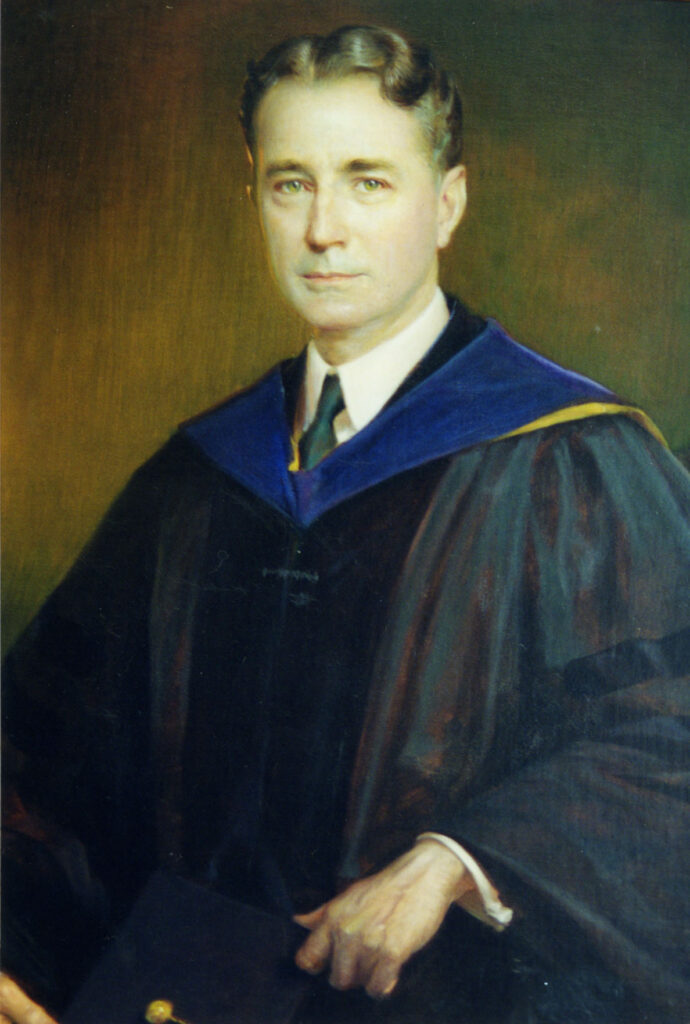
Jacobs intended the university to be a “living memorial” to James Oglethorpe. The institution holds the finest portrait of Oglethorpe and the only painting of his wife, Elizabeth. The collegiate coat of arms, emblazoned with three boars’ heads and the inscription Nescit cedere (“He does not know how to give up”), replicates the Oglethorpe family standard. For the college athletic teams, Jacobs chose an unusual mascot, the petrel (pronounced “pea-trel”)—a small, persistent seabird that, according to legend, inspired Oglethorpe while on board the ship Anne on the way to Georgia.
The university’s Gothic revival architecture was inspired by James Oglethorpe’s honorary alma mater, Corpus Christi College at Oxford University in England. The historic halls, constructed from 1915 to 1929, are made of blue granite from Elberton, trimmed with Indiana limestone, and topped with variegated gray-green slate roofs. Thomas Henry Morgan, the “dean of Atlanta architects,” led the design. The Oglethorpe campus is actually an unfinished work. The original design was to be twenty-six buildings arranged in the form of a Greek cross. Tower forms, gabled roofs, double-hung leaded windows, and battlements are displayed in three halls. They honor the families of Oglethorpe’s prominent benefactors: publisher William Randolph Hearst, Atlanta banker Colonel Robert Lowry, and Coca-Cola bottling franchise owner John T. Lupton of Chattanooga, Tennessee.
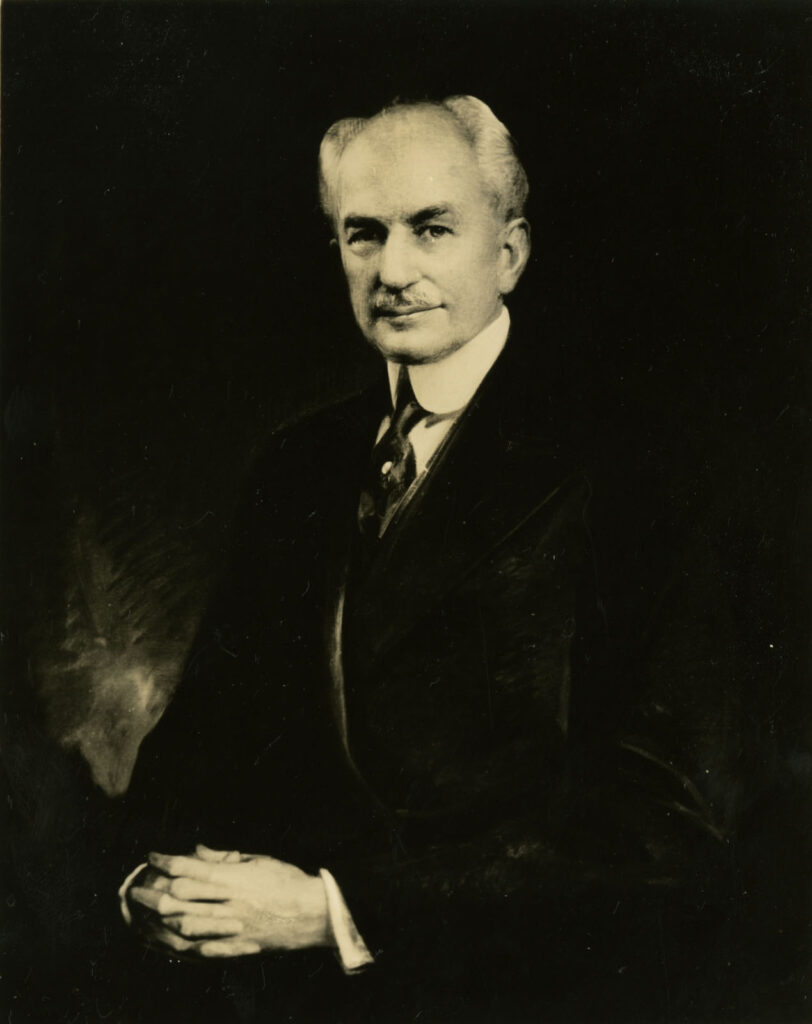
The most striking feature of the Oglethorpe campus is the Lupton bell and clock tower, built in 1920. This four-story structure fronting Peachtree Road has a three-face clock set in a massive, square, flat-topped tower with battlements, projecting the appearance of a fortified castle. In 1972 the university added a forty-two-bell cast-bronze carillon, one of the finest in Georgia, to complement the original ten bells. Another landmark on the campus is Hermance Stadium. Named after benefactor Harry Hermance, it was intended to be bowl-shaped. Hermance dedicated the first section on October 26, 1929, and lost his entire fortune three days later in the stock market crash. The structure, which is only one-eighth of the proposed project, stands as a monument to the Great Depression.
Under President Thornwell Jacobs (1916-43) Oglethorpe University fostered many innovations. These included perhaps the first summer school in Georgia (1919); some of the earliest celebrity-laden commencement ceremonies (Franklin D. Roosevelt and Martha Berry have been among the more than 150 notables to receive honorary degrees); one of the earliest collegiate presses in the South and an extensive teacher training program, both established in the 1920s; the “University of the Air” experiment, which broadcast college courses by radio in the 1930s; and the Crypt of Civilization, a multimillennial time capsule sealed in 1940.
Oglethorpe University since 1945
In 1950 Oglethorpe, under President Philip Weltner, secured accreditation by the Southern Association of Colleges and Schools. (His son, Charles Longstreet Weltner, U.S. congressman and chief justice of the Georgia Supreme Court, was Oglethorpe’s most distinguished alumnus in the contemporary era.) President Weltner initiated one of the earliest efforts to develop a core curriculum as a common learning experience with the twin aims “to make a life and to make a living,” a plan that was applauded by the New York Times. Oglethorpe has continued leadership in the development of a core arts and sciences program, with efforts funded by the National Endowment for the Humanities.
Since the 1980s Oglethorpe University has been consistently recognized for academic excellence in such publications as the Fiske Guide to Colleges. Long integral to culture in Atlanta, Oglethorpe is the home of the Georgia Shakespeare Festival, which shares the university’s Conant Performing Arts Center. Athletics are played in the Division III Southern Collegiate Athletic Conference, which comprises such academically selective liberal arts colleges as Centre College in Kentucky and the University of the South in Tennessee. Oglethorpe’s enrollment is about 1,300, with plans for controlled growth. The student body, primarily from the South, has become increasingly cosmopolitan; typically it includes students from about thirty states and thirty foreign countries.
